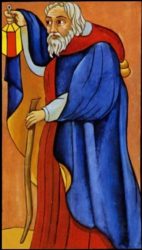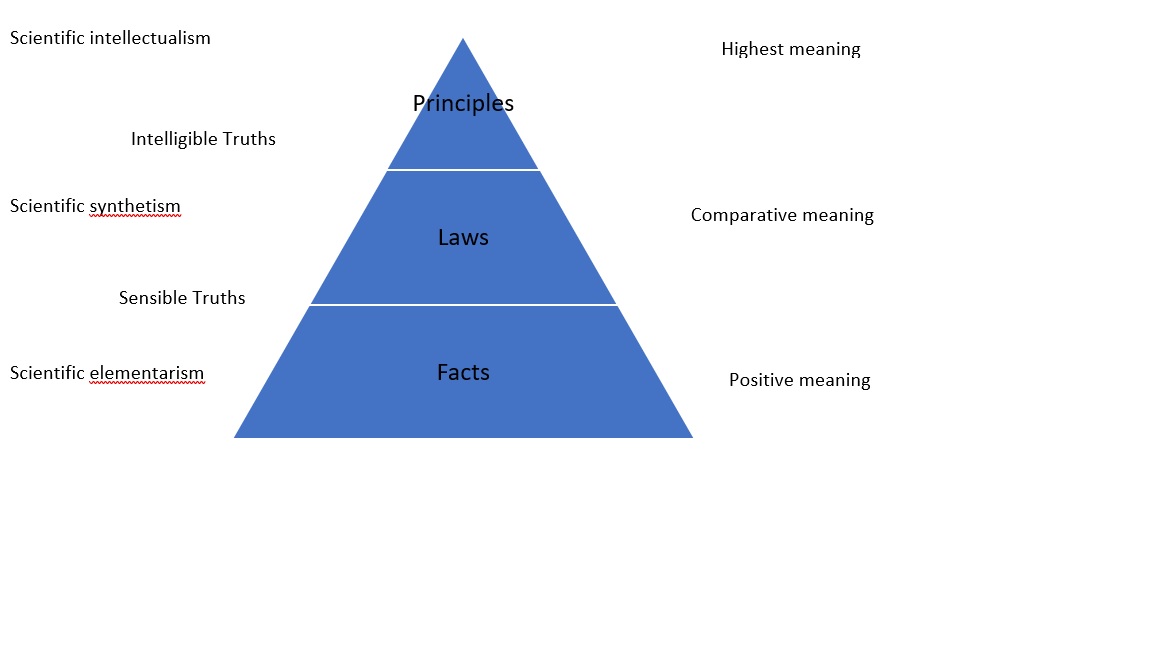The most profound thought is bound up with the historical, external figure of Christ. And the greatness of the Christian religion is that it is there for every stage of development. It is within the grasp of the most naive consciousness and at the same time it is a challenge to the deepest wisdom. ~ Georg Hegel
The story of Jesus’ three temptations in the wilderness, as described in Matthew and Luke, was commented on by Valentin Tomberg in all the phases of his public life. Hence, it will serve to demonstrate the consistency of Tomberg’s understanding. This will involve three steps
- A brief summary of four works from different periods of his life.
- The methodology used
- An interpretation of the three temptations, highlighting any development and changes over time.
Tomberg’s Life Stages
The following works contain discussions of the three temptations in the wilderness. The different versions show a remarkable consistency, especially for someone who allegedly underwent a radical conversion.
- Anthroposophic Meditations on the New Testament. These meditations were composed during the period when Tomberg was fully committed to the Anthroposophical Society. However, by the end of the 1930s, he was being eased out.
- Inner Development. This is the English translation of a series of seven lectures delivered in 1938, when he was separated from the society. It seems that he believed that the Michael Community (a church inspired by Rudolf Steiner’s teachings) would be the bearers of a new future.
- Degeneration and Regeneration of Jurisprudence. This was a thesis written by Tomberg in 1944 concerning his understanding of law and jurisprudence. By this point, he had entered the Catholic Church. Since the thesis was intended to be academic, there are no references to Steiner or other Hermetic teachings.
- Meditations on the Tarot. Obviously, this is Tomberg’s mature work, and the one he wanted to be known by. Steiner plays an important role in it, but he is placed in a much larger context. The foundation of these meditations is the Hermetic Tradition from Hermes Trismegistus up through its manifestation in France up to the early part of the 20th Steiner, then, is one figure within that tradition, and not the sole authority as he is for the anthros.
By placing Steiner within a larger tradition, he cannot play the role of an extra “pope”. Thus, as Tomberg came to see, Hermetism is not in competition to the exoteric church but instead confirms its teaching. His task was to reconcile the two, which had been in conflict for centuries.
The church without the life of Hermetic teachings would fall into a type of humanism in which, for example, a pope would be more concerned about air conditioning rather than saving souls. And Hermetism on its own usually leads nowhere, as the examples of Crowleyism and the Golden Dawn show.
Philosophy
Tomberg adheres to the tradition of the true Philosophy, i.e., that which includes Plato, Aristotle, Neoplatonism, Medieval realism, philosophical idealism, not to mention Hermetism. Other ideologies like empiricism, materialism, atheism, and so on, are actually anti-philosophies, and therefore have no place.
As was explained previously, Philosophy teaches that there are three levels of knowledge. The highest is Intuition, or direct insight, which transcends even logical reasoning. To make an analogy, suppose Mike and Ike are at home, wondering if it is raining outside. Mike analyses the weather patterns and makes the case that it cannot possibly be raining. Ike, on the other hand, goes out the front door onto the lawn, where he can experience the rainfall.
So which of the two knows the truth? Clearly it is Ike. Your own experience should convince you of the futility of logical arguments to change someone’s mind, except perhaps among mathematicians.
Excursus on Hinduism
Since it is unlikely that Europeans will start building temples to the monkey god, they probably are referring to Yoga or the Advaita Vedanta when they embrace Hinduism. However, as we’ve demonstrated convincingly, the Advaita philosophy is compatible with the True Philosophy of the West—just search for Guenon, Radhakrishnan, Murti, or Bede Griffiths, inter alia, in these pages.
However, what was proper to the people of the Indian subcontinent is not necessarily proper to contemporary Europeans. The Vedanta is a static, ahistorical system, but Europeans have an historical consciousness. Now the yogis recognize that there has been a “Fall of man” from some Golden Age to our current situation; the entire reason for being of the yogic path is to restore that Age.
Yet, they have no explanation for how that Fall occurred. Just ask your neighbourhood yogi, as I have. The West, on the other hand, does have an understanding of the circumstances around the Fall. Because of that, it also has a better understanding of how to restore the primordial state.
There is no question of making a “case” through reasoning. Rather the task is to gain a deeper insight by intuition, similar to the way Ike determined it was raining. After having meditated on Tomberg’s explanation of the temptations in the desert, you can see that it rings true.
Method
In the Meditations, Tomberg explains:
[myths] reveal the archetypes which manifest themselves endlessly in history and in each individual biography – they are mythological symbols pertaining to the domain of time.
In other words, a myth is true, not simply because it describes a physical event at a certain instant in space-time, but rather because the event is recreated in human consciousness throughout history.
Hans Leisegang, quoted by Tomberg, claimed:
Every myth expresses, in a form narrated for a particular case, an eternal idea, which will be intuitively recognised by he who re-experiences the content of the myth.
That “eternal idea”, or “ideal” in Tomberg’s version, is the goal of the myth. The process was described in The Future of Intelligence. The myth starts with physical events, which is at the level of doxa or opinion. We then try to formulate the unifying idea that relates the various elements of the myth. Eventually, we may grasp, in a moment of insight, the eternal idea in the Mind of God, the Wisdom of God or Sophia.
Some want to insist on the details of the myth, as if the story could have been recorded by a camera crew. Then the story of the temptations could make a good Netflix show, with the image of the devil and beautiful depictions of the various temptations. And the audience would be on the edge of their seats wondering if the temptations would be accepted.
But in that case the deeper, or true, meaning would be obscured. Only when the temptations can be experienced fully in one’s own consciousness, as well as that of humanity as a whole, will the myth’s meaning be revealed.
There is no argument or proof necessary, but rather the “seeing” that it is true. The revelation is not the details of the story; rather, it is that moment of insight. Its truth is understood when it brings light onto one’s own situation as well as the human condition.

